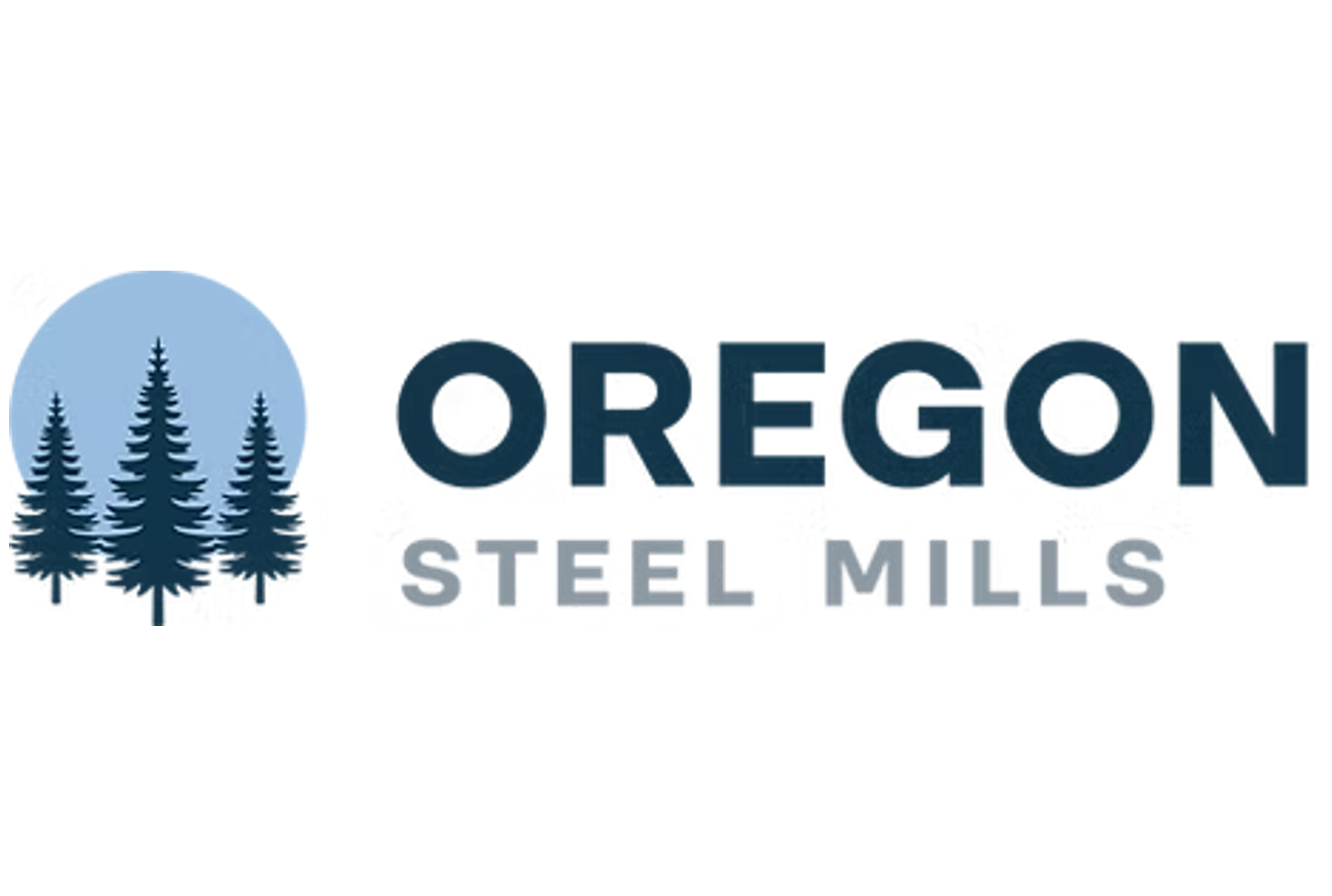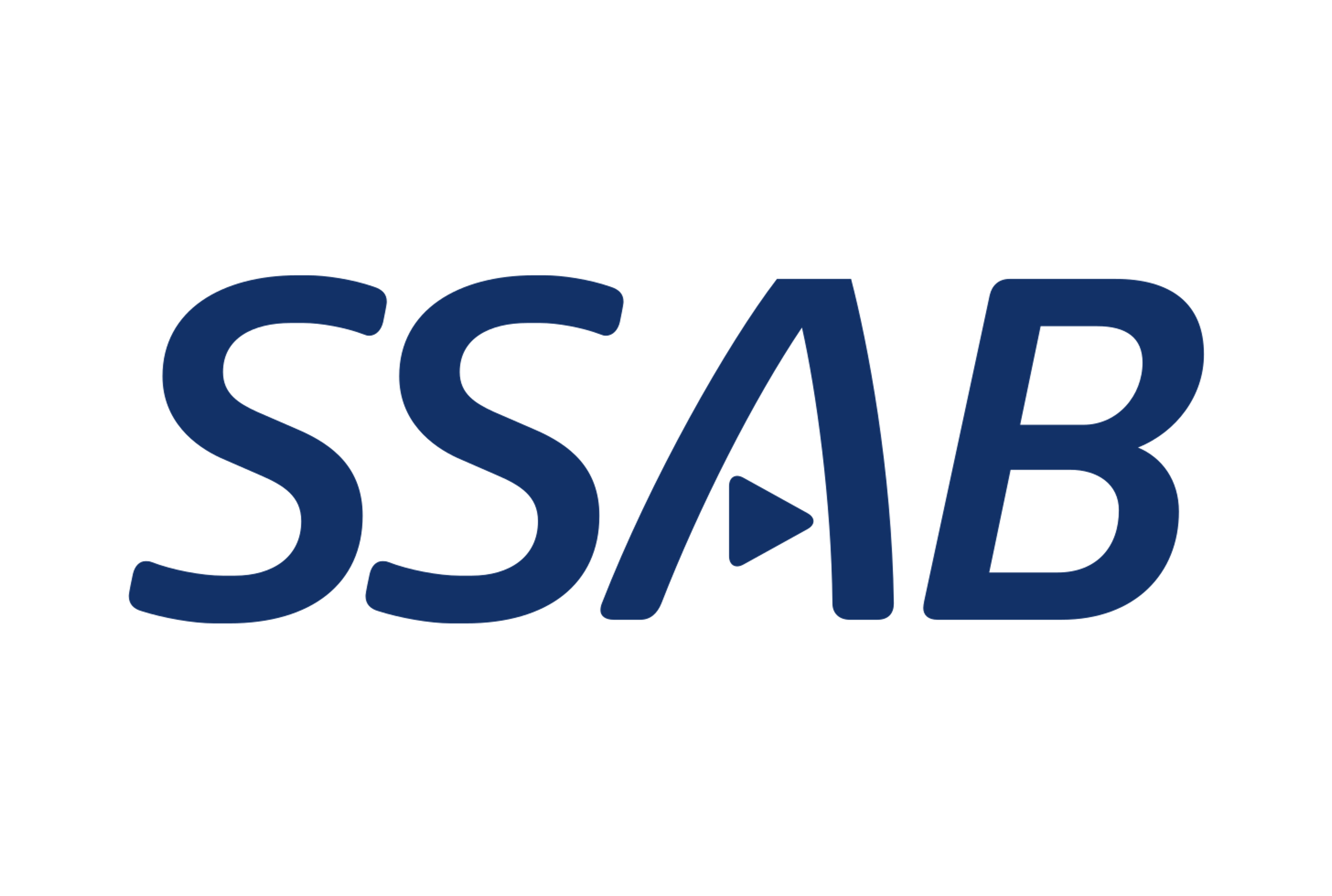Analysis

July 13, 2025
Final Thoughts
Written by David Schollaert
Roundabouts. I’ve been thinking about roundabouts these days. I’ve also been thinking about boxing (or at least movies about it). And the connection of both to the current steel market.
Let me explain.
First, roundabouts. You know them! They’re circular intersections where traffic flows continuously in one direction around a central island.
The purpose of roundabouts is to improve traffic flow and safety at intersections. Sure, speeds are lower. But they eliminate the the stop-and-go of traditional intersections and decrease congestion.
Vehicles entering the roundabout must yield to traffic already circulating inside it. And believe it or not, the proper use of turn signals in roundabouts is crucial to ensure they function as intended. You need to signal to those entering the roundabout whether you’re exiting, proceeding straight, or going around.
Unfortunately, most don’t use their turn signals. And that can turn a roundabout into something that more closely resembles a traditional intersection – with stop-and-go traffic and a high risk of accidents.
As I see it, President Trump’s tariff policies – and the lack of clear signaling around them – have a lot more in common with a roundabout than you’d think.
Tariff roundabout or never-ending carousel
Some tariffs seem lost in an eternal loop, going round and round. They congest traffic and cause headaches. And then there are the tariffs that dart around, in and out, without signaling. They’re almost looking for a fender to bend.
Every day, there seems to be a new tariff. Sure, the changes might not always apply directly to the steel. But they’ll apply to adjacent markets, or maybe just impact us individually as consumers.
So why am I thinking about boxing?
Many of those I’ve been speaking with—buyers of all sizes across the steel supply chain—feel like they’re “punch-drunk” on tariff news. They can’t really make sense of it all. They don’t know whether the measures will be in effect a week from now – let alone a month, quarter, or year from now.
What do they do without clear signaling from the administration about where the tariffs are going? They keep inventories lean, maintain contractual obligations, stay mostly out of the spot market – and, as best they can, safeguard relationships.
Our latest survey data suggest that the market is a bit disoriented about where things are going. The first two slides underscore how Trump’s tariffs, and their unpredictability, are impacting the typical flow of the market.
Survey says
For starters, 40% of survey respondents think prices have peaked following a short-lived bump in prices in June. (I’m not sure it lasted long enough for us to call it a rally.) And another 37% believe the peak will happen before summer ends. Yet, roughly two-thirds believe prices will be higher than they are now in two months time.
So… if I’m reading this correctly, prices might have peaked. But two months from now, they will have turned lower and then ratcheted back up?
(Editor’s note: You can click on any of the charts below to expand them. Note, too, that the numbers in the bottom left-hand side of the tables indicate which page you can find them on in the survey slide deck.)

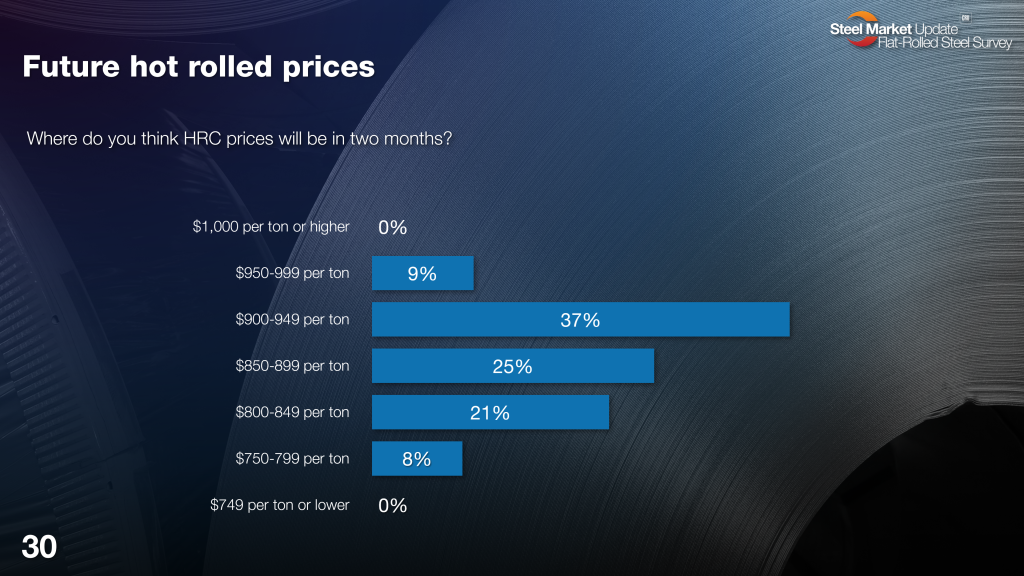
You can see from the comments below that buyers feel like they’re just trying to keep their footing between bells, taking cover from tariff blows.
Here is what some of them had to say:
“Unpredictable Trump action.”
“The market has to improve if the prices go up.”
“We still have weak demand, and tariffs aren’t going to be impactful until next year.”
“Despite goosing up tariffs, Trump’s chaos has eroded demand.”
“The question is, how long will it be at the bottom?”
“I still feel there will be fallout for the elimination of most imports.”
“Demand is still off. Interest rates need to move before folks feel better about spending.”
“The 50% tariff will prop up steel, but the overall economy will depress demand.”
Taking a bruising
There’s been a clear shift since Section 232 tariffs were doubled to 50% in June. (Or maybe it has more to do with seasonality?) Whatever the case, we see that many steel buyers aren’t meeting forecasts. And nearly two-thirds of service centers respondents say they are releasing less steel than they were a year ago. Meanwhile, few are building inventory. Those trends are detailed in the following three charts.
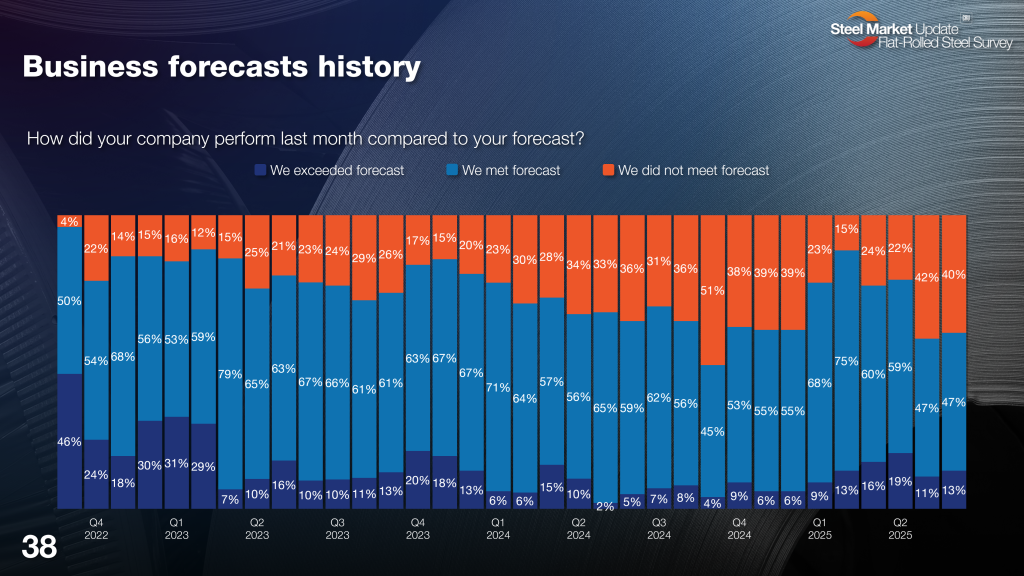
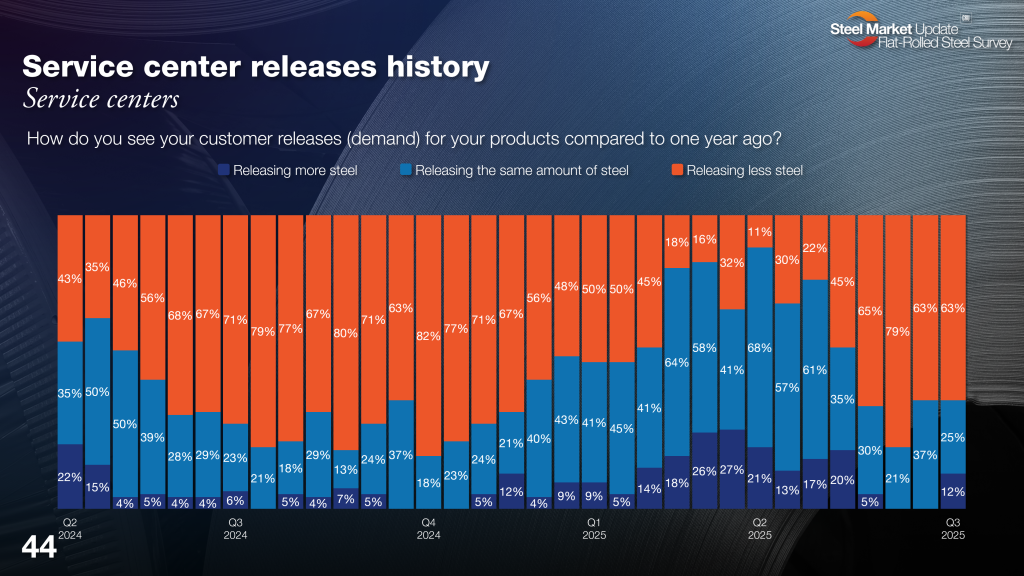
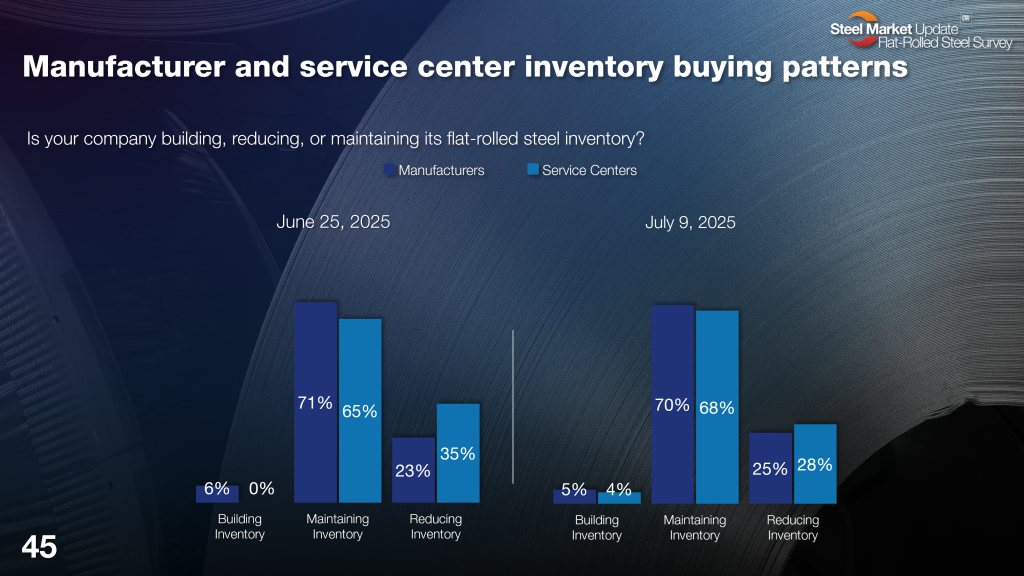
But it’s not all bad
It looks like there still isn’t much import competition. More than 70% of survey respondents say imports aren’t competitive with the 50% Section 232 tariff. When it was 25%, most still said imports were competitive. And if there is some really goods news, it’s this: Despite all the tariff noise, most survey respondents say that demand is relatively stable. They’re still on their feet and fighting.
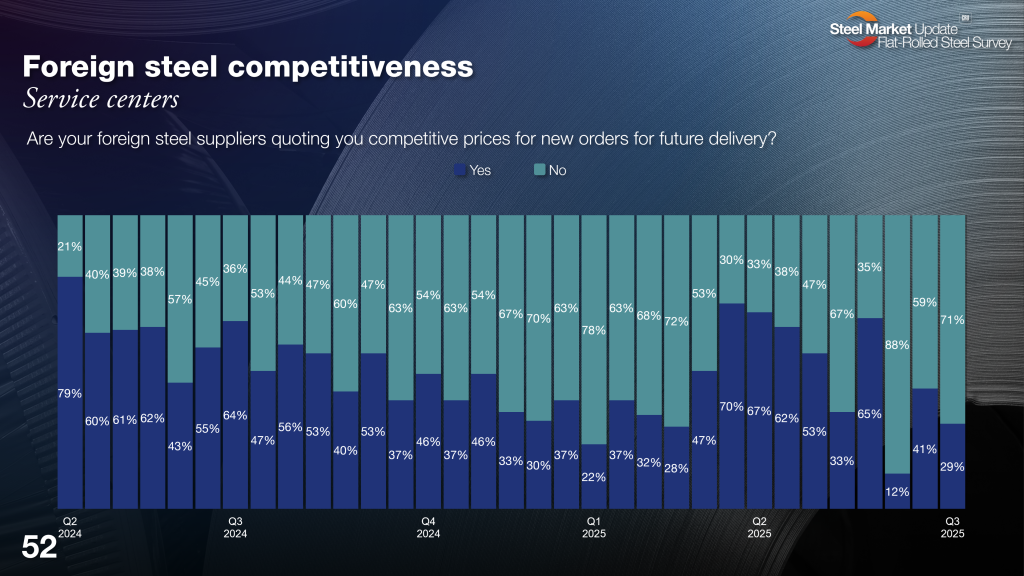
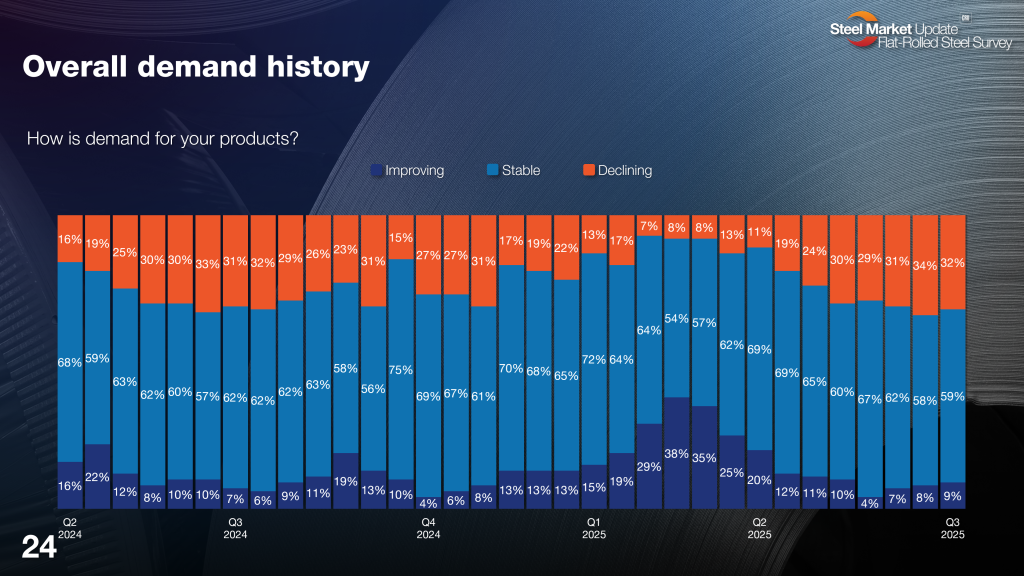
Resilient, that’s what we call it
The point here isn’t that things are bearish or that the market is struggling. Neither of those things is an accurate portrayal of current dynamics. What I believe our recent survey results highlight is a resilient marketplace.
Yes, things are more complex than they were before President Trump “unleashed” his tariffs. But the steel market continues to respond and recalibrate.
That makes me think of one of the most memorable scenes in Rocky Two. After Adrian wakes from a coma, Rocky hasn’t left her side. He’s telling Adrian that if she doesn’t want him “mixin’ with Creed,” he’ll find a way to make ends meet.
Adrian tells Rocky (start cueing the music), “There’s only one thing I’d like you to do for me, come here.”
Mickey’s hanging on to every word. Rocky leans in, “What?”
Adrian says, “Win!”
You see Micky in the background. His face goes bright. “Then what are we waiting for!?!”
We know how the rest of it goes. Rocky takes down Apollo Creed after going the distance—15 rounds and a dramatic double knockout.
Sure, our indicators point to an uncertain market. But they also underscore how steel buyers continue to focus on “winning” in the long term.
The steel market isn’t for the faint of heart, but it would make for a killer blockbuster with a dazzling script.
Where’s my popcorn?



